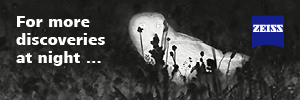| This article is a stub. This article is short and lacking information. You can help the BirdForum Opus by expanding it. |
Overview
The mexican portion of the Yucatan peninsula comprises around 7% of the country's land area but only hosts around 4% of its population. Yucatan includes the site of the famous Chicxulub crater, the second largest confirmed impact crater on earth and one of the major causes of the Cretaceous–Paleogene extinction event which saw the demise of non-avian dinosaurs. The peninsula consists of a low-lying karst of soluble rocks like limestone. Occasional roof collapses give the characteristic cenotes or sinkholes which are the main source of fresh water for much of the area.
Birds
Notable Species
There are broadly 3 groups of special birds:
1. North coast range-restricted species or endemics. (Near-)endemics are: Mexican Sheartail, Yucatan Gnatcatcher and Yucatan Wren.
2. Cozumel Island endemics and specialities. The endemics are: Cozumel Emerald and Cozumel Vireo. Cozumel Thrasher is likely extinct.
Areas 1 and 2 host some Caribbean species like Zenaida Dove, Caribbean Dove, Caribbean Elaenia and Western Spindalis
3. Southern (wetter) area endemics or more widely distributed species. Including Ocellated Turkey, Black-throated Bobwhite, Yucatan Poorwill, Yucatan Nightjar, Yellow-lored Parrot, Yucatan Woodpecker, Yucatan Flycatcher, Yucatan Jay, Yucatan Vireo, Black Catbird, Green-backed Sparrow, Gray-throated Chat, Rose-throated Tanager and Orange Oriole.
Rarities
To do
Check-list
Other Wildlife
To do
Site Information
History and Use
To do
Areas of Interest
- Cozumel island (Isla de Cozumel)
Access and Facilities
To do
Contact Details
To do
External Links
To do



